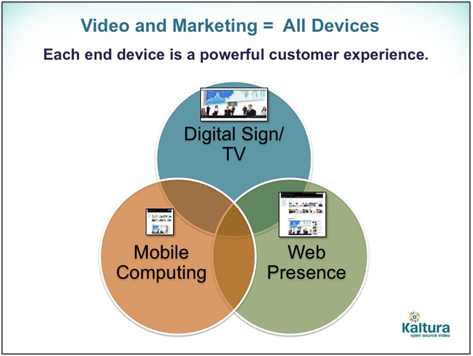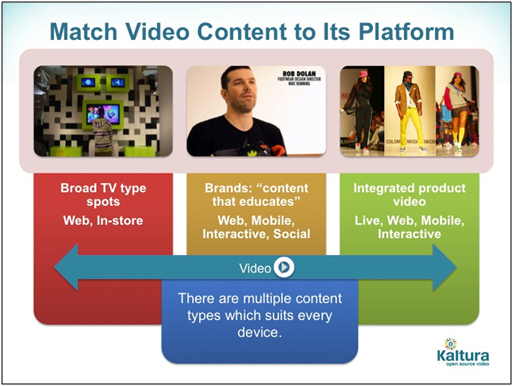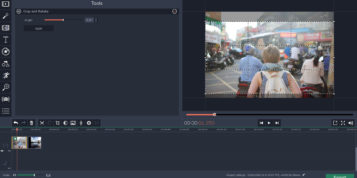Nothing encapsulates a marketing message more eloquently and concisely than video. There are many great examples of compelling videos online today, but how many marketers feel that they have really nailed the multi-platform opportunities that this medium delivers?
Back in December 2011, MarketingSherpa found that webpages with video attracted 2-3 times as many monthly visitors, doubled their time on the site, and achieved a 157% increase in organic traffic from search engines. By adding a multi-channel video experience to the mix, marketers can plug in to the appetite for consuming video on all types of devices to revolutionise their marketing campaigns.
Online video now accounts for 50% of all mobile traffic, and up to 69% of traffic on certain mobile networks. (Bytemobile Mobile Analytics Report, 2012), while smartphone users are increasingly consuming product video as part of their multichannel shopping experience, with 49% of smartphone owners watching at least one product video during a three-month period. (E-Commerce Times, 2012).
The pervasiveness of connected devices and digital media at home and in the workplace provides marketers with multiple ways to use great video content to reach existing and future customers. Each device – be it a smart TV, PC, tablet or smartphone – should be individually targeted by marketers as part of a cohesive, multi-platform video strategy designed to attract and retain customers.

Before embarking on a multi-platform, video-based marketing campaign, it’s important to consider a few ground rules.
First, it’s essential to map the video content to each specific platform/device. A five minute HD video incorporating lots of fancy graphics will not deliver the desired effect on a smartphone, for example.
Second, be sure to adopt an integrated approach in order to touch existing and future customers on different devices with complementary video content.
And third, focus on leveraging social tools such as Twitter Vine to boost the power of your video marketing still further.

Let’s review some examples to demonstrate how video can be used as a part of an integrated, multi-device marketing campaign.
A retailer is planning a major launch for a new product and the marketing team opts to use video as a key component in both the planning and execution phases of the campaign.
- The marketing team creates an internal training video for sales staff based on product videos received from the supplier, adding a voice over and various edits that explain the product/service, the positioning and the promotion.
- As the internal personnel are being trained, the internal production team creates the marketing messages and videos that will run in a loop on the digital media signage within the physical stores.
- The marketing agency creates a set of unique, custom videos that will be targeted at visitors to the website based on specific days and times, with links to relevant videos and related products and promotions.
- The marketing agency also creates sets of short clips for use on the mobile app when shoppers may be in store. These videos also have an embedded QR code so that once the shopper watches the video they can go to the check-out counter for a special discount and share the promotion with others.
- The PR team uses short video clips on Twitter Vine, Facebook etc. to generate further excitement around the launch.
Another example is that of an insurance company that is creating a new campaign to target consumers. They use video to:
- Run broadcast spots as an awareness campaign for their new insurance products/promotions
- Train their agents on the new promotions and the offerings for the consumer
- Create unique spots designed to run on the digital signage inside the local branches
- Create targeted video clips, based on post code, age and gender, which are served up when the end user inputs their information through the website and/or via a mobile device.
- Create a buzz on social media sites with specific video clips.
All of these options are available now, and can be easily managed via an online video management platform that creates light work of video-based marketing for the entire team – from the developer through to the video producer and the marketing department. The developer can utilize the platform to leverage the latest in technology and make the video consumption experience as feature rich as possible, while the video producer can be safe in the knowledge that the content quality is as good as it possibly can be on every device. Finally, the marketing team can use the online video platform to quickly and easily publish video to any site and any device, as well as track analytics in real time and make changes to video campaigns based on this data.
In the not-too-distant future, marketers will be able to further harness the power of online video platforms to create targeted, dynamic video messages on the fly, based on time, device and location. Video content, based on a core pool of content, will be easily tailored to suit different devices by using a centralized system for distribution and management. Monetisation plans can be put in place to match the various campaigns on the fly and make the most of every published video clip and a key part of any cross platform direct marketing campaign.
By adhering to the ground rules that are a prerequisite for a successful multi-platform video campaign, and by working closely with the other stakeholders in your organization, marketers can generate greater levels of engagement among existing and future customers.





